

Andrew Maclean
Honda CR-V RS e:HEV vs Toyota RAV4 Edge Hybrid: Spec battle
6 Days Ago

Design Contributor
Sean Hadley (24) from Detroit, recently graduated from the ArtCenter College of Design in Pasadena, California, where he got a degree in Transportation Design.
During his studies he worked as an intern for Ford Motor Company in Detroit. Besides designing cars, he also loves camping and exploring the outdoors.
The Toyota FJ-E is envisioned as a fully-electric four-wheel drive for 2030, taking inspiration from the original FJ-40 which was the short-wheelbase version of the Land Cruiser back in the ‘60s, and the modern FJ-Cruiser of the ‘00s.
The concept, created as a thesis project, is based on a “skateboard” platform featuring four electric motors, with a fully independent suspension and a floor-mounted 100kWh battery protected by steel skid plates and rock sliders.
It also has modular body panels that can be easily removed enabling customisation.
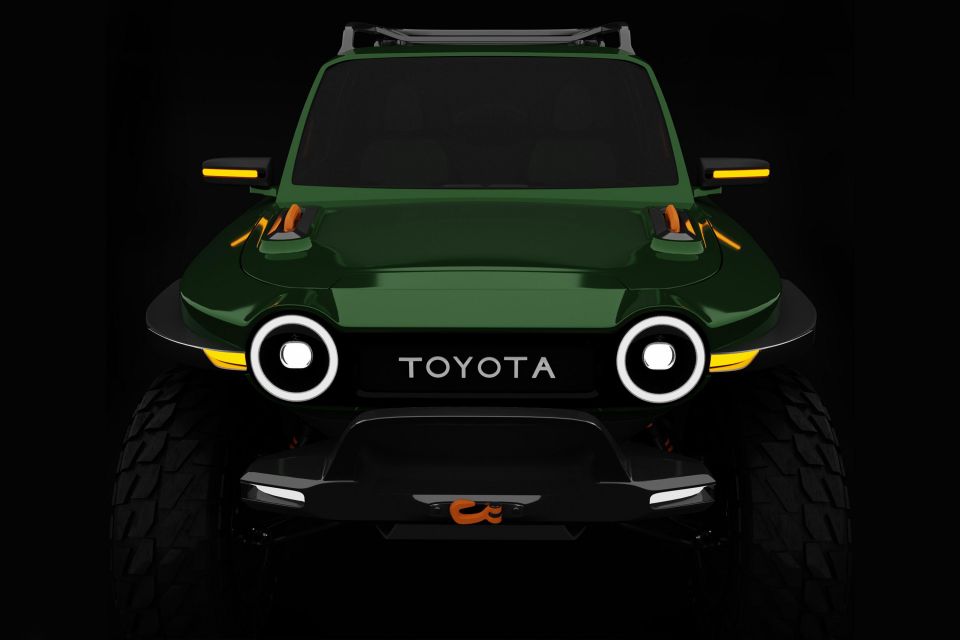
As Sean describes it: “For my final project in school I wanted to design the most fun and exciting vehicle possible. I have always been inspired by the outdoors and have a passion for camping and exploring.
“The 2030 Toyota FJ-E is a result of that passion and is a vehicle designed to handle any adventure. The form of the vehicle is heavily driven by functionality paired with elements from the iconic FJ-40.”
The FJ-E is 4445mm long, 1880mm wide and 1880mm tall, with a 2921mm wheelbase and a noteworthy 356mm ground clearance. It has three exterior modes: Urban with an enclosed cabin for daily use, Overlanding with roof-rack and spare wheel for longer trips, and Desert with the roof, rear lid, and side doors removed for an immersive driving experience.

The overall proportions are similar to the Ford Bronco (2020) and Jeep Wrangler (2017), two of the most capable four-wheel drives on the market. However, thanks to the absence of an engine, the FJ-E is even more extreme and futuristic in its design, while it also has a lot more space available for storage.
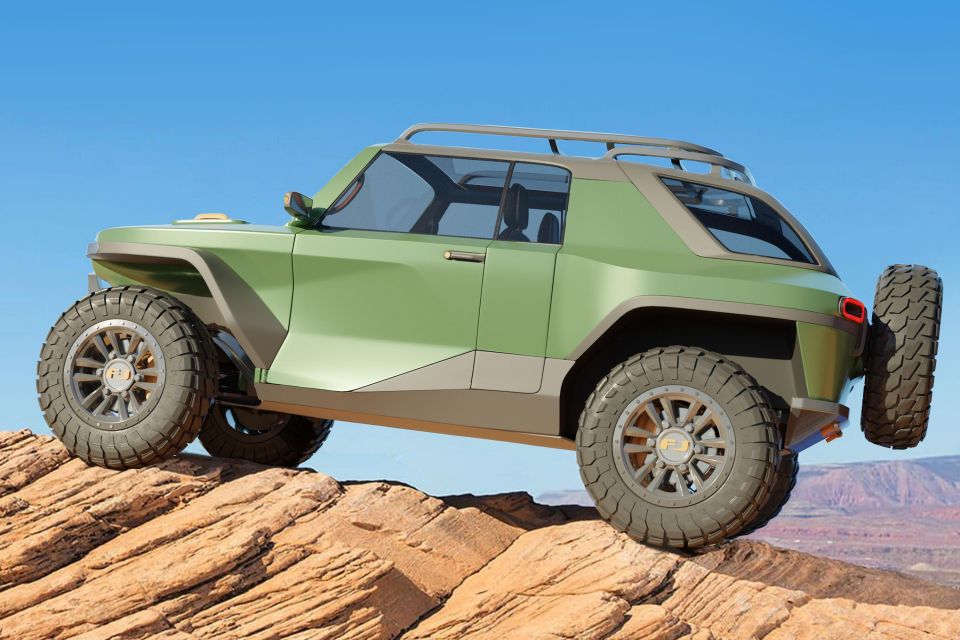
The profile is characterised by the huge wheels with chunky off-road tires, the impressive ground clearance, and tiny front and rear overhangs that provide the vehicle with exceptional approach/ramp/departure angles.
The body is surprisingly muscular for a four-wheel drive, with recesses behind the front wheels, toned up side sills, strong shoulders and an inclined rear windshield. The semi-integrated fenders and the exposed spare tire at the back give it a purposeful look.
The window graphics, suicide doors, strong c-pillar, upright windshield, and metal roof rack are clearly inspired by the Toyota FJ Cruiser (2006-2017).

At the front, the FJ-E is instantly recognisable thanks to that familiar face with round LED headlights sticking out of the bonnet, Toyota lettering on the rectangular grille and long, horizontally-arranged turn signals integrated on the front fenders.
The wheels are uncovered at the front, with an off-road bumper made of metal and a winch. The bonnet which is actually the cover for the “frunk” (additional storage space) is almost flat but the chamfer around its rounded edges makes it look quite modern.
The handles sticking out on its sides provide access to the dual removable auxiliary batteries, while the small cover above the grill gives access to dual charging ports.
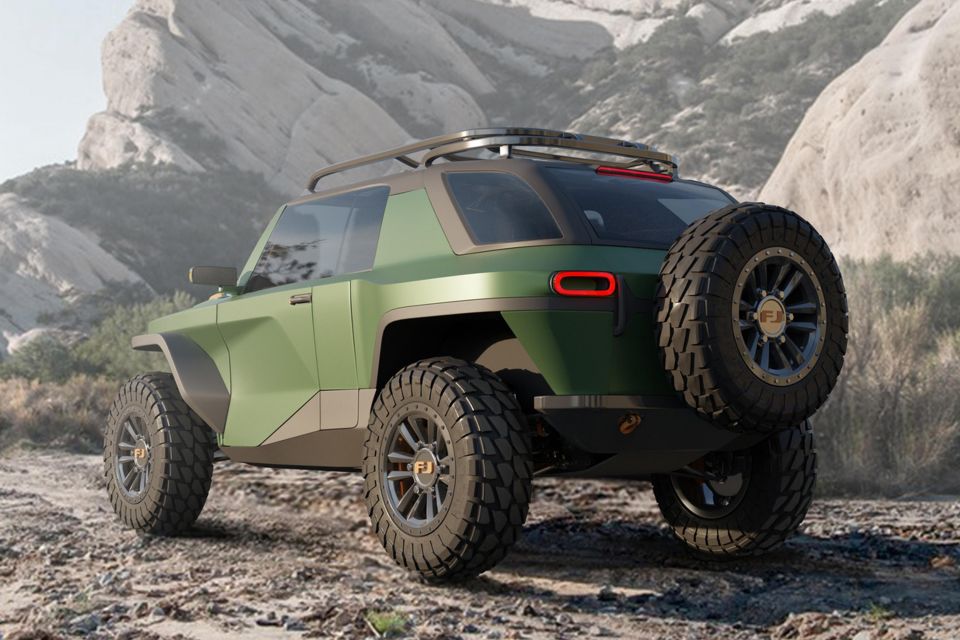
At the back, the full-size spare tire is hiding most of the side-hinged rear door, with the rear windscreen opening up independently. The LED taillights are mounted high, and the removable rear lid is painted the same colour with the roof, side sills and fenders, contrasting the matte green body.
Below the practical roof rack that can be used as a base for a roof tent, or carry extra luggage and sports/camping equipment, there is a dual sunroof with sections on the removable roof and rear lid.
Last but not least, the underbody protection made of metal is visible from almost every angle, hinting on the untamed nature of this electric vehicle.
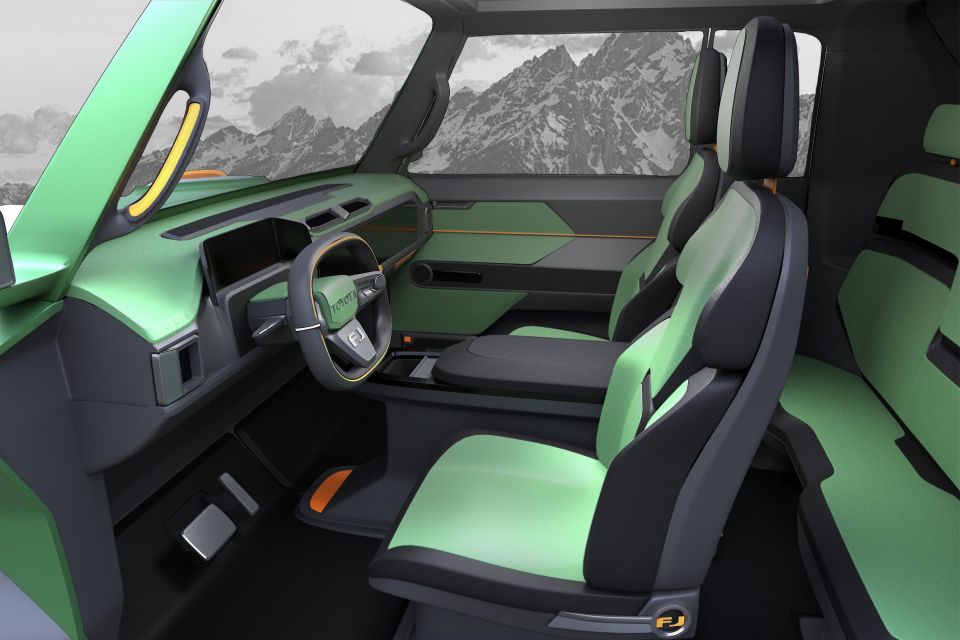
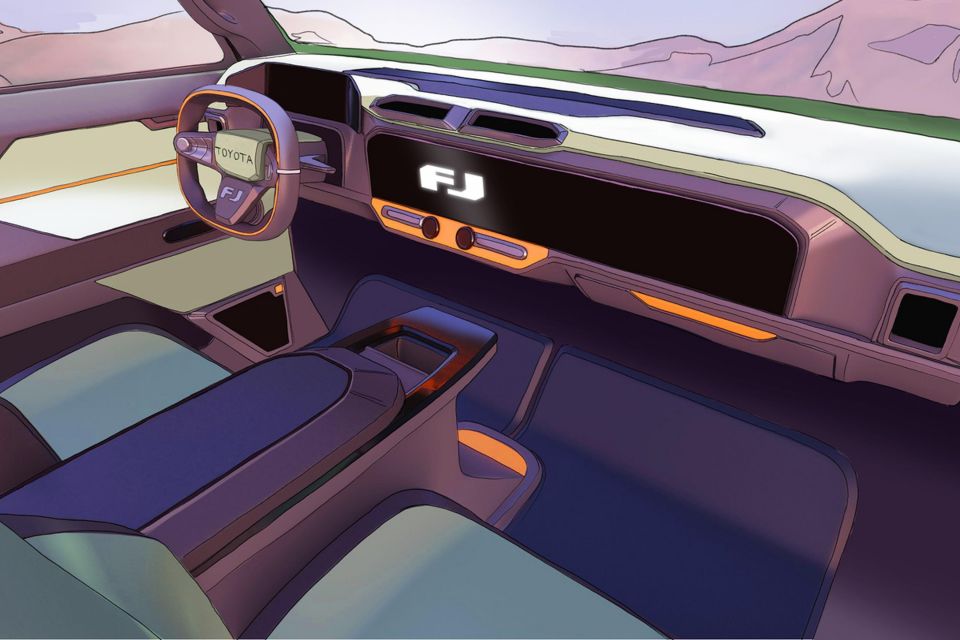
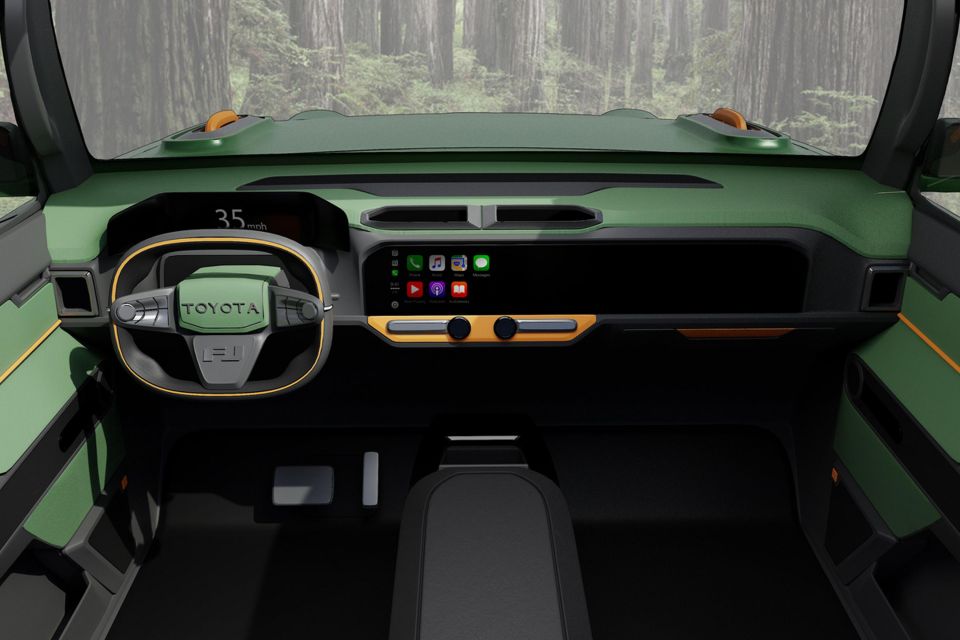
Inside, the theme is simplicity and rugged forms reflecting the exterior. A large horizontal touchscreen covers most of the dashboard, with subtle physical controls underneath.
Behind the rectangular steering wheel with integrated buttons and knobs, there is a curved digital instrument cluster displaying the necessary information. The climate vents have a square shape on the sides and an elongated shape in the centre.
The central tunnel is not connected with the console and has a “floating” look. The rubber floor mats look ideal for easy cleaning while the grab handles located on the A-pillars make it easier to enter the vehicle.
The cabin can accommodate four passengers with limited room at the rear bench seats, comparable to a crew cab pick-up. Thanks to the removable panels it can be transformed in a compact pick-up with a generous rear bed as well as lockable drawers above the fenders and the rear bumper for additional storage.
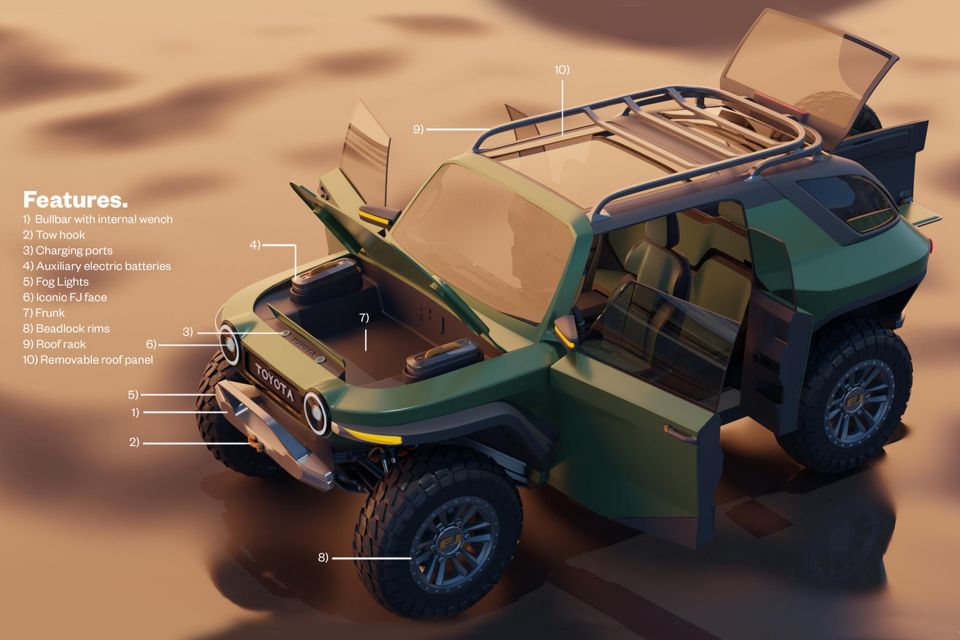
The Toyota FJ-E is an interesting take on a rugged all-electric vehicle for the near future. It could be a perfect companion for people who love adventure and want a serious off-roader with a nostalgic style-meets-substance exterior design and a minimal interior.
The fact its design is inspired by the retro-futuristic Toyota FJ Cruiser launched in concept form back in 2003 (the production version debuted in 2005), doesn’t take away any of its charm.
The relatively compact exterior dimensions and classic proportions bring it closer to the short-wheelbase LandCruisers of the past. Clever tricks like the removable auxiliary batteries and the numerous storage compartments give it extra points in practicality.
What could be improved is the packaging, with more space for the passengers. Also, some exterior details could use some refinement in order for this project to look closer to realisation.
Putting those small things aside, this concept has fuelled our appetite for a purebred four-wheel drive by Toyota to star in the compact segment. Would you like to see something like this in production?
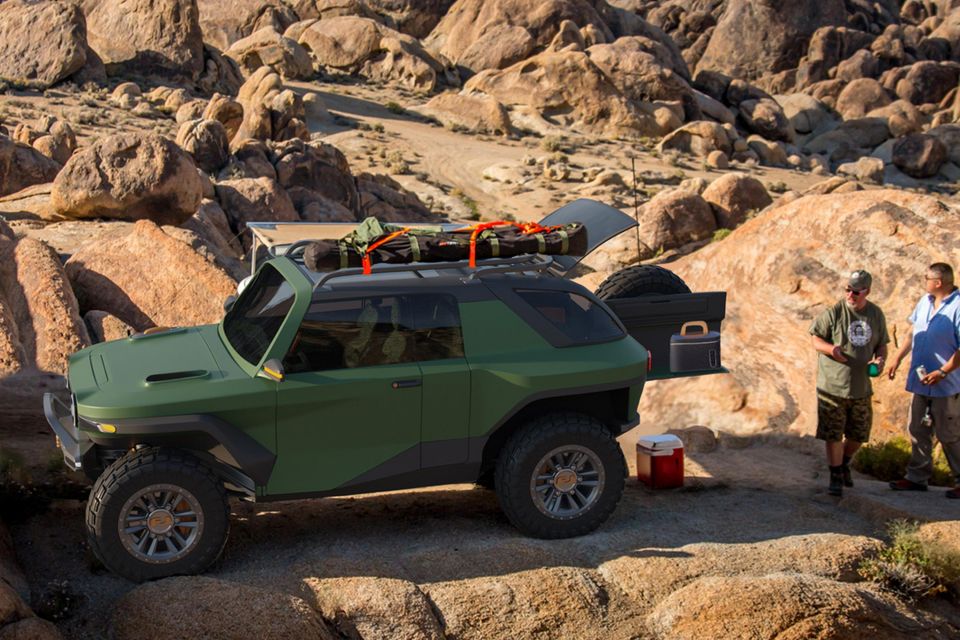
If you liked the Toyota FJ-E you can find more of Sean’s work on his website or follow his Instagram profile.
Disclaimer: The Toyota FJ-E concept was independently designed by Sean Hadley for show purposes as a free-time project, and is not associated with Toyota.
Where expert car reviews meet expert car buying – CarExpert gives you trusted advice, personalised service and real savings on your next new car.


Andrew Maclean
6 Days Ago


Shane O'Donoghue
5 Days Ago


Anthony Crawford
4 Days Ago


Matt Campbell
3 Days Ago


James Wong
2 Days Ago


Max Davies
18 Hours Ago